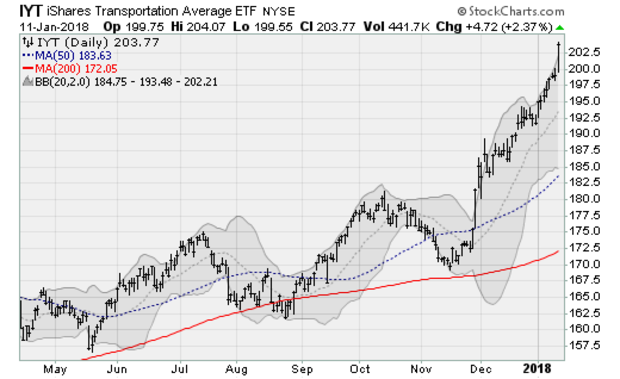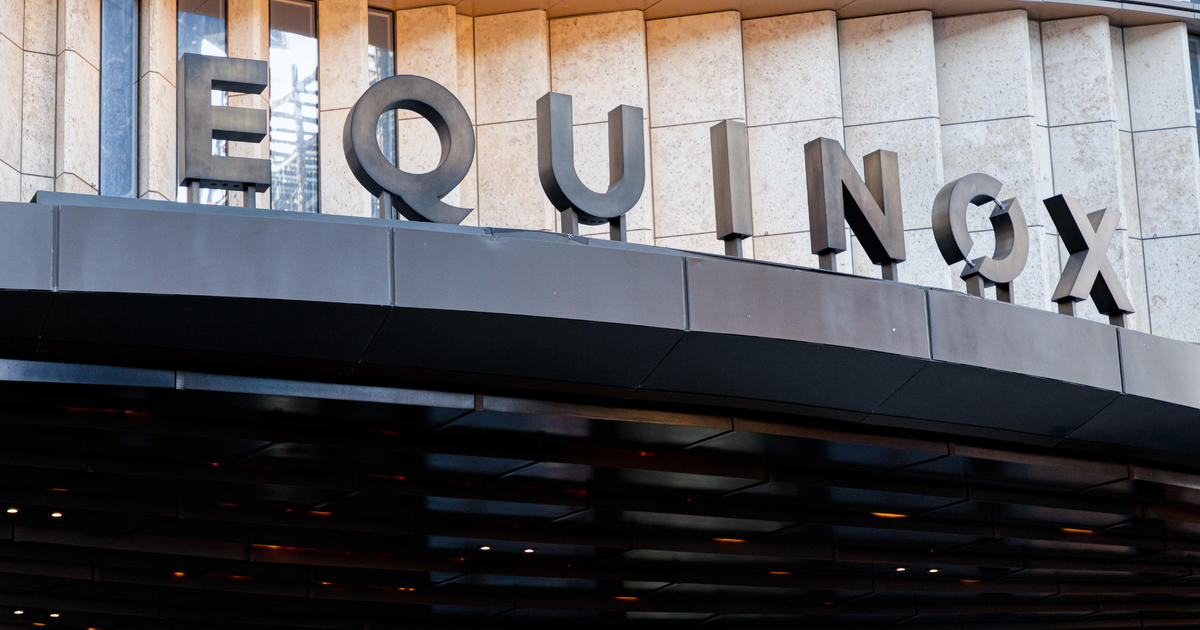3 reasons the 2018 stock market rally is downright weird
Remember this moment: Wall Streed is in the midst of one of the strongest starts to a new year in history. And it comes off 2017's "perfect year" that saw the S&P 500 rise on a total-return basis every month. That has never happened before.
Transportation stocks are leading the way, thanks to strength in airline stocks (chart below). Given that transports are seen as being on the "front lines" of the economy, this suggests investors are aggressively pricing in a surge in GDP growth.
But oddities abound, suggesting something just isn't quite right on Wall Street:
The "VIX" is hanging tough
The single most interesting development was that the CBOE Volatility Index (Wall Street's "fear gauge") rose in unison with stocks on Thursday and again on Friday -- breaking the long-time inverse correlation between stocks and the VIX. That's a potential regime change similar to the situation that marked the final stages of the last two bull markets -- when both volatility expectations and stock prices rose together.
This comes at a time when Wall Street brokerages including Goldman Sachs (GS), Deutsche Bank (DB) and Bank of America (BAC) are warning that small traders have overextended positions in short VIX exchange-traded funds, meaning they're betting volatility will remain low. This potentially sets the stage for a violent reversal as these short positions are closed.
And it wouldn't take much of a rise in the VIX to make that happen. An increase from around 10 to around 15 would force some $110 million in short-covering buying, according to JPMorgan's (JPM) head quant Marko Kolanovic. Goldman puts the tipping point at an increase of just 3.
Insane momentum
The S&P 500 has rallied consistently for the past month, the past three months and the past six months -- a run not seen since the late 2012-late 2014 rally driven by the Federal Reserve's "QE3" stimulus program.
It has also neared or exceeded a technical indicator called its upper Bollinger Band on a daily, weekly and monthly time frame. Since these levels are set by default at two standard deviations above the average, it's akin to a rubber band being stretched tight.
Sure stocks could keep rising. But all that potential energy wants to pull prices back down in a normal and healthy pullback. Similar setups like this have, in the past, resulted in short-term pullbacks.
Bond market pressure
Treasury bonds were hit hard last Wednesday on reports that China could potentially pull back on its pace of purchases. Although Chinese officials denied the reports, it focused attention on a number of vulnerabilities in the bond market.
For one, the flow of bond-buying stimulus from global central banks will soon turn negative (witness the Bank of Japan's decision earlier this week to taper its purchase pace). Two, thanks to the GOP's tax cuts, the supply of debt being issued by the U.S. Treasury is set to rise to cover the government's revenue shortfall.
And three, the Fed is actively working to lift interest rates at time when the stock market's performance increasingly relies on the flow and availability of cheap credit via debt-funded share buybacks and mergers and acquisitions.
Admittedly, none of this may matter until later this year or even into 2019. But as time goes on, the situation could grow ever stranger -- and thus more dangerous for investors.





